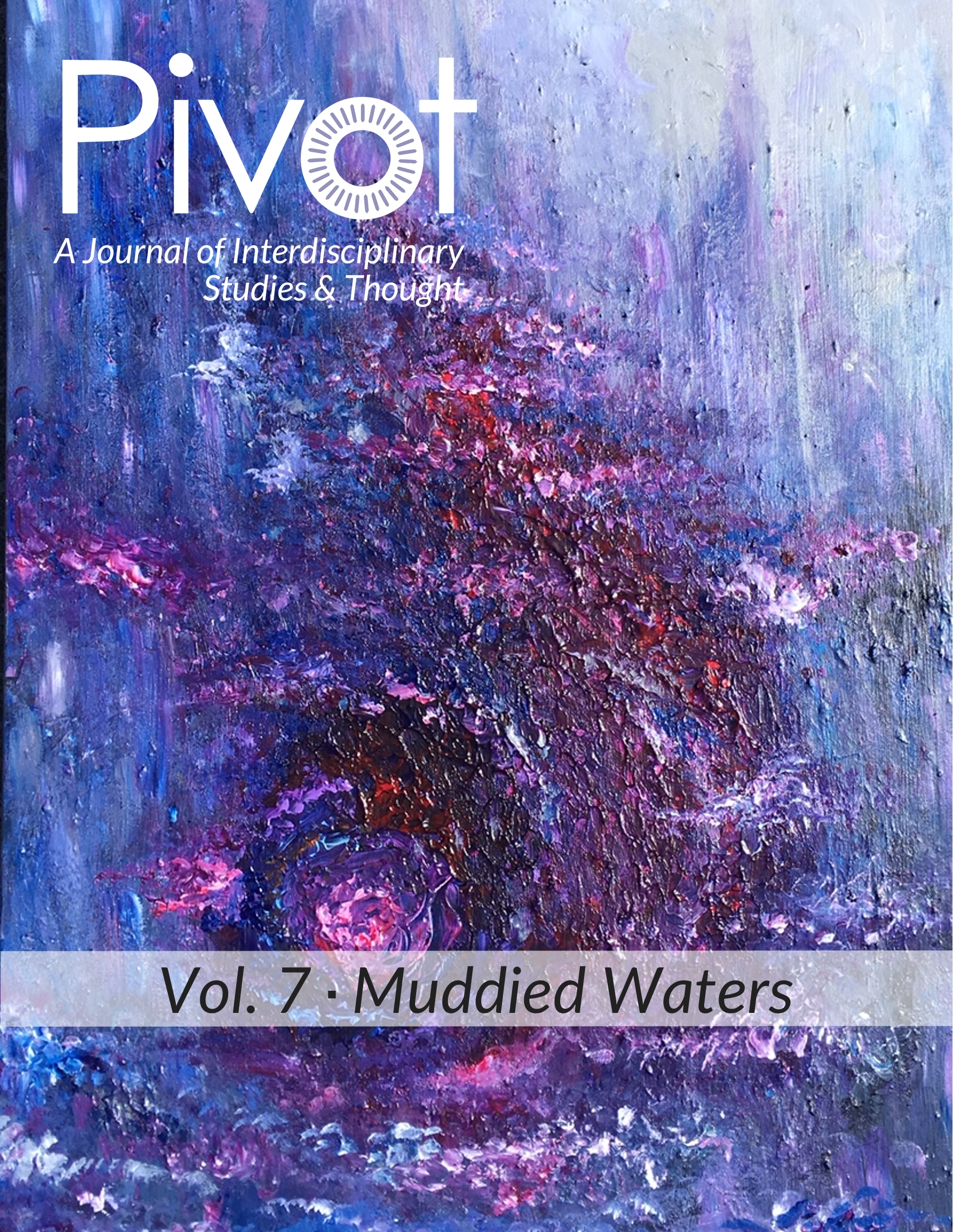What Can Play: The Potential of Non-Human Players
DOI:
https://doi.org/10.25071/2369-7326.40291Abstract
What can post-humanism teach us about game design? This paper questions the line drawn between what species and matter can play and what cannot play. Combining works by scholars of feminist post-humanism, new materialism, and game studies, primarily Jane Bennett, Donna Haraway, and T.L. Taylor, it proposes that play is a form of communication not only between animals and humans but also between plants and cyborgs, insects and atoms. Beginning by interrogating the borders of the human that have been built on ableist and racist discourses, this paper moves towards considering the human as interspecies and outlines that we must reassess the ways in which a multiplicity of species experience the intra-action that constitutes “play.” With a brief look into the history of defining play in both game studies and animal studies and their small crossover, play is reconfigured into an outlook or an approach rather than a set of rules. It is a drive that all species and matter experience, including insects, bacteria, and metal. This moves us beyond considering solely the materiality of our bodies at play by reconsidering the objects of play as our co-players, as matter with agential force. I argue that we need to reconsider the videogame player as an interspecies being, an assemblage of human and non-human bodies. The de-anthropocentricization of the popular notions of player agency allows for a multiplicity of reactions not created in the linear cause and effect course, the belief in ultimate player control within procedural systems, which dominates game studies. This paper concludes by submitting possibilities of what considering the non-human through a feminist and anti-ableist lens can offer game designers, players, and critics, such as considering the material platform’s impact on play, reforming the individualistic agency of players, and designing for the Other(s).
References
Barad, Karen, Meeting the Universe Halfway. Duke UP, 2007. DOI: https://doi.org/10.1215/9780822388128
Bennett, Jane “A Vitalist Stopover.” New Materialisms: Ontology Agency, and Politics, edited by Diana Coole and Samantha Frost. Duke UP, 2010.
Bennett, Jane. Vibrant Matter: A Political Ecology of Things. Duke UP, 2010. DOI: https://doi.org/10.1215/9780822391623
Berlant, Lauren. “Cruel Optimism.” Affect Theory Reader. Duke UP, 2010. DOI: https://doi.org/10.1215/9780822394716
Braidotti, Rosi. The Posthuman. John Wiley & Sons, 2013.
Chen, Mel. Animacies: Biopolitics, Racial Mattering, and Queer Affect. Duke UP, 2010.
Clough, Patricia. “The Affective Turn: Political Economy, Biomedia, and Bodies,” Theory, Culture, and Society, vol. 25, no. 1, 2008, pp. 1-22. DOI: https://doi.org/10.1177/0263276407085156
Fels, Anna. “Opinion | Should We All Take a Bit of Lithium?” New York Times. 13 Sep. 2014, sec. Opinion. https://www.nytimes.com/2014/09/14/opinion/sunday/should-we-all-take-abit-of-lithium.html. Accessed 8 Aug 2017
Flanagan, Mary. Critical Play: Radical Game Design. MIT P, 2013.
Giffney, Noreen, and Myra J. Hird. Queering the Non/Human. Ashgate Publishing, 2008.
Graeber, David. “What’s the Point If We Can’t Have Fun?” The Baffler, 12 Jun 2014. https://thebaffler.com/salvos/whats-the-point-if-we-cant-have-fun, Accessed 8 Aug 2017.
Haraway, Donna. The Companion Species Manifesto: Dogs, People, and Significant Otherness. Prickly Paradigm Press, 2007.
Haraway, Donna. “Training in the Contact Zone: Power, Play, and Invention in the Sport of Agility.” Tactical Biopolitics: Art, Activism, and Technoscience, edited by Beatriz DaCosta and Kavita Philip. MIT P, 2010.
Haraway, Donna. Staying With The Trouble: Making Kin in the Cthulhucene. Duke UP, 2016. DOI: https://doi.org/10.1215/9780822373780
Haraway, Donna. Simians, Cyborgs, and Women: The Reinvention of Nature. Routledge, 1991.
Huizinga, Johan. Homo Ludens: The Study of Play-Element in Culture. Routledge & Kegan Paul, 1949.
Juul, Jesper. The Art of Failure: An Essay on the Pain of Playing Video Games. MIT P, 2013.
Kafer, Alison. Feminist Queer Crip. Bloomington and Indianapolis: Indiana UP, 2013.
Kunzelman, Cameron. The Nonhuman Lives of Videogames. 2014. Georgia State University, Masters Thesis. http://scholarworks.gsu.edu/communication_theses/110. Accessed 8 Aug 2017.
Leggett, Hadley. “Plants Know Their Relatives — And Like Them!” WIRED. https://www.wired.com/2009/10/plant-siblings/. Accessed 8 Aug 2017.
Macklin, Colleen. “Gaming the System: Making Games (for Change).” Games for a New Climate: A Game Design Case Study for Humanitarian Programs. 2013. The New School, Masters Thesis.
Macklin, Colleen, and John Sharp. Games, Design and Play: A Detailed Approach to Iterative Game Design. Addison-Wesley, 2016.
Parikka, Jussi. The Anthrobscene. U Of Minnesota P, 2014.
Puar, Jasbir K. “Coda: The Cost of Getting Better: Suicide, Sensation, Switchpoints.” GLQ: A Journal of Lesbian and Gay Studies, vol. 18, no.1, 2012, pp. 149-158.
Puar, Jasbir K. “I Would Rather Be a Cyborg than a Goddess.” European Institute for Progressive Cultural Politics. http://eipcp.net/transversal/0811/puar/en. Accessed 13 Mar 2018.
Rosenberg, Jordana. “The Molecularization of Sexuality: On Some Primitivisms of the Present.” Theory & Event, vol. 17, no. 2, 2014, n.p.
Saey, Tina Hesman. “Body’s Bacteria Don’t Outnumber Human Cells so Much after All.” Science News. 6 Mar 2016. https://www.sciencenews.org/article/body%E2%80%99s-bacteriadon%E2%80%99t-outnumber-human-cells-so-much-after-all. Accessed 8 Aug 2017.
Salen, Katie, and Eric Zimmerman. The Game Design Reader: A Rules of Play Anthology. MIT P, 2006.
Sicart, Miguel. Play Matters. MIT P, 2017.
Taylor, Sunaura. Beasts of Burden: Animal and Disability Liberation. The New Press, 2017.
Taylor, T.L. “The Assemblage of Play” Games and Culture. vol. 4, no. 4, 2009, pp. 331-339. DOI: https://doi.org/10.1177/1555412009343576
Toft, Ida “About Cross-Species Game Design.” http://crossspeciesgamedesign.com/ Accessed 17 Aug 2017.
Tsing, Anna Lowenhaupt. The Mushroom at the End of the World: On the Possibility of Life in Capitalist Ruins. Princeton UP, 2015. DOI: https://doi.org/10.1515/9781400873548
Tsing, Anna Lowenhaupt. “Unruly Edges: Mushrooms as Companion Species.” https://tsingmushrooms.blogspot.com/2010/11/anna-tsing-anthropologyuniversity-of.html. Accessed 8 Aug 2017.
“‘Why Don’t Ants Play?’ An Interview with Mark Moffett.” American Journal of Play. http://www.journalofplay.org/issues/7/1/interview/2-why-don%E2%80%99tants-play-interview-mark-w-moffett. Accessed 8 Aug 2017.
Wirman, Hanna. Orangutan Play On and Beyond a Touchscreen, edited by K. Cleland, L. Fisher, and R. Harley. Proceedings of the 19th International Symposium of Electronic Art, ISEA2013, Sydney. http://ses.library.usyd.edu.au/handle/2123/9475. Accessed 8 Aug 2017.


